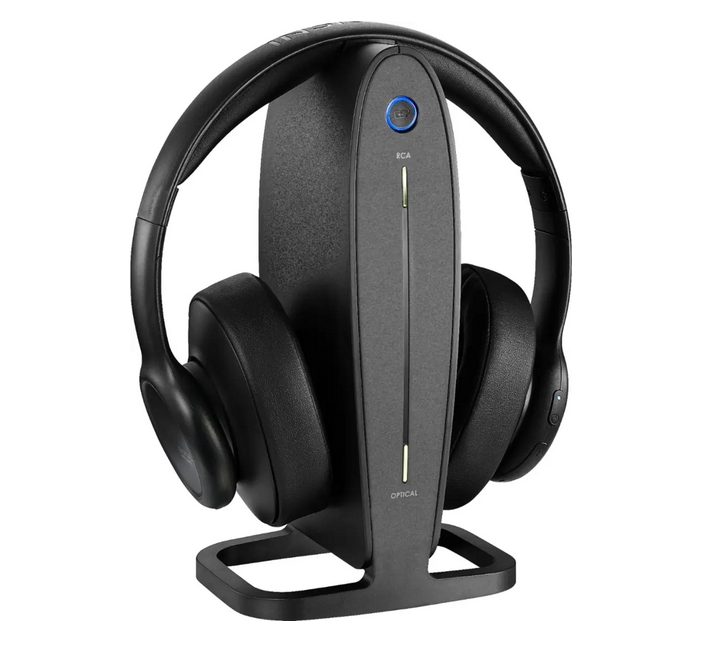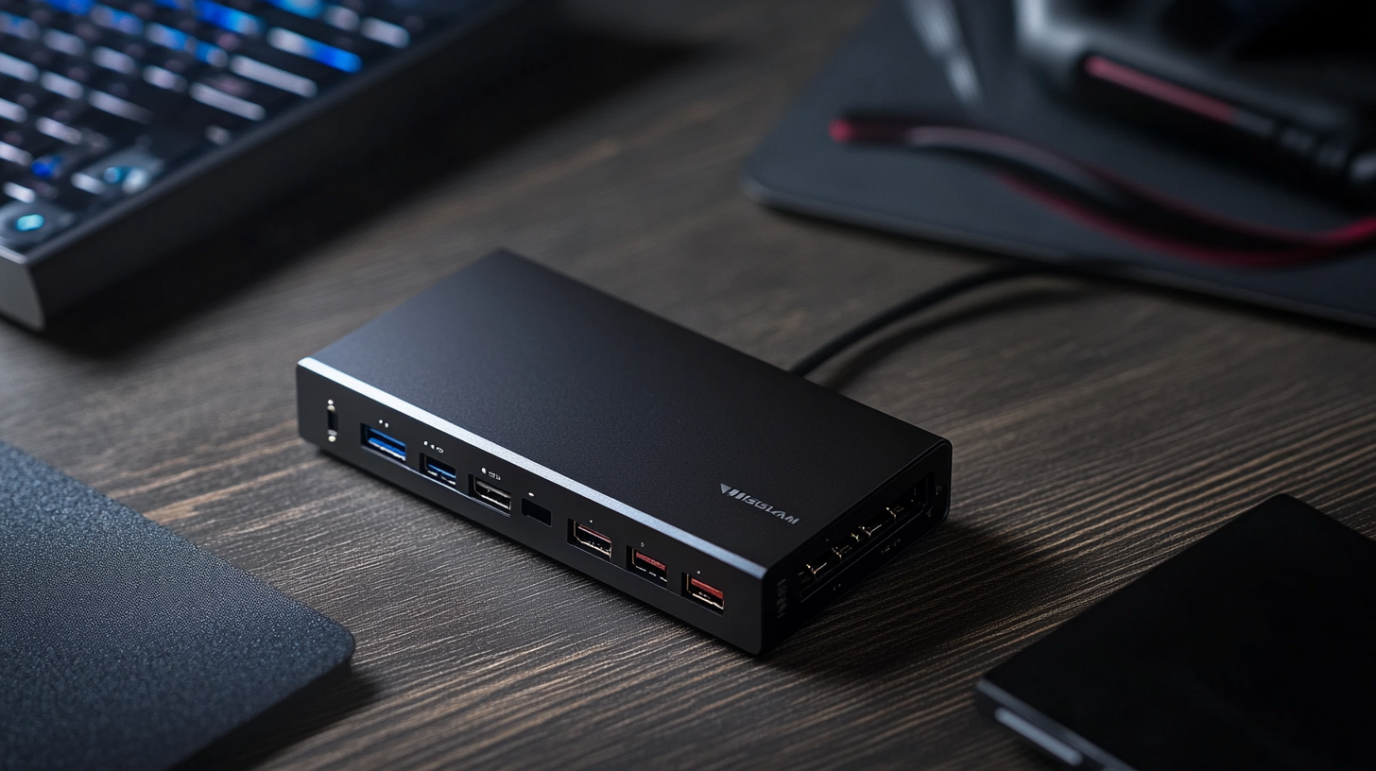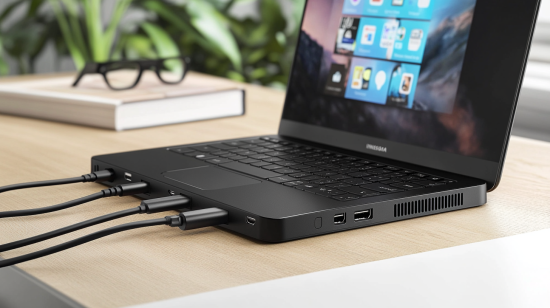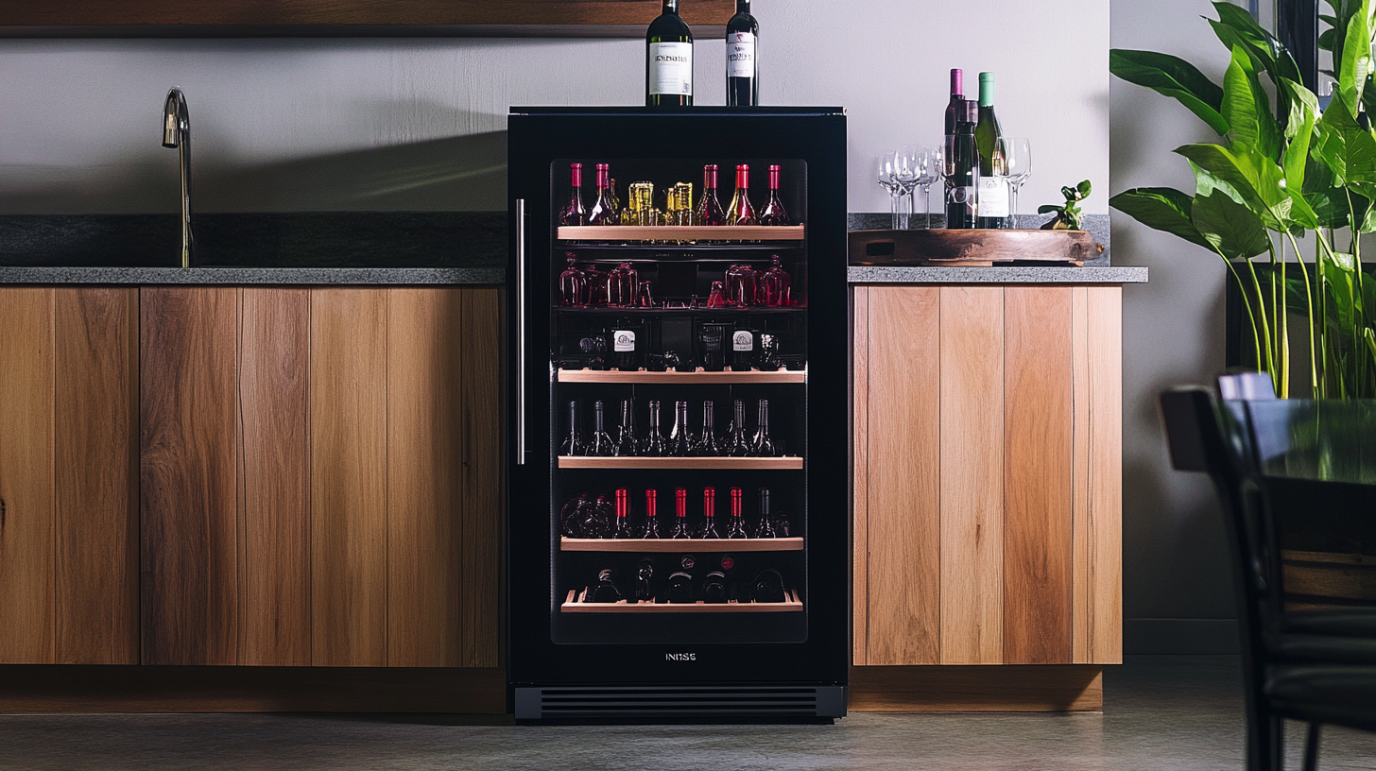
Insignia™ – RF Wireless Over-the-Ear Headphones – Black
- Listen to your TV or music wirelessly without disturbing others.
- Analog and digital audio inputsCompatible with any audio components (TVs, CD/DVD players, MP3 players, mobile devices).
- Hassel-free digital wireless signalTransmits high-quality audio from up to 33′.
- Built-in rechargeable lithium-ion battery with convenient docking stationOffers up to 10 hours of use and allows easy charging and storage.
- Over-the-ear headphones with adjustable headbandProvide comfort during extended listening sessions.
- Lightweight designAllows you to wear for a long duration as you watch TV.
$179.99
Finding Audio Freedom Without Breaking the Bank
I still remember the day my wired earbuds caught on the doorknob for the hundredth time, yanking my phone from my hand and sending it clattering across the floor. That was it – my breaking point. As I stood there, staring at my now-cracked screen and tangled mess of cables, I knew it was time to cut the cord and embrace wireless audio. But where to begin? With so many options on the market, ranging from budget-friendly to bank-breaking, I found myself overwhelmed.
After weeks of research and personal testing, I discovered Insignia Wireless Headphones—a brand that consistently delivers quality audio without the premium price tag. Today, I’m sharing everything I’ve learned to help you navigate the wireless audio landscape and determine if Insignia is the right choice for your listening needs.
The Insignia Advantage: More Than Just Affordable Audio
Let’s be honest—most of us have heard of brands like Bose, Sony, and Apple dominating the wireless headphone market. Their products are excellent, but they come with price tags that can make your wallet weep. That’s where Insignia comes in.
For those unfamiliar with the brand, Insignia is Best Buy’s in-house electronics line, designed to offer reliable technology at more accessible price points. When I first encountered them, I was skeptical. How good could “budget” headphones really be? As it turns out, Insignia Wireless Headphones deliver impressive performance without the premium price tag that has become standard in today’s audio market.
But are they right for you? That’s what we’re here to explore.
Breaking Down the Insignia Wireless Headphone Lineup
Insignia doesn’t overwhelm consumers with dozens of nearly-identical models. Instead, they offer a streamlined selection that covers most listening needs:
Over-Ear Options
The flagship Insignia NS-HAWHP over-ear headphones have become my go-to for home listening. With plush padding and an adjustable headband, they’re designed for extended wear. The sound profile leans toward balanced, with decent bass response and clear mids—impressive considering their price point typically hovers between $49.99-$79.99 (I caught mine on sale for $59.99).
What surprised me most was the battery life. Advertised at 18 hours, I’ve consistently gotten closer to 20 hours of playback at moderate volume levels. For someone who frequently forgets to charge devices overnight, this extended battery performance has saved me countless times during work-from-home days.
On-Ear Alternatives
If you prefer something lighter, the NS-CAHBTEBNM on-ear model offers a more compact design without sacrificing too much in audio quality. I picked up a pair for my daily commute, appreciating their foldable design that takes up minimal space in my already-crowded backpack.
The trade-off comes in comfort during extended sessions—after about three hours, I do notice some pressure on my ears that isn’t present with the over-ear models. That said, the battery life remains impressive at roughly 15 hours, and the more portable design makes them ideal for travel.
True Wireless Earbuds
Joining the true wireless revolution, Insignia’s NS-EBTWS1 earbuds have become surprisingly popular. When I tested these against competitors costing twice as much, I found the sound quality differences less pronounced than the price difference would suggest.
The battery life sits at about 5 hours per charge, with the included case providing an additional 10 hours—fairly standard for true wireless options in this price range. They’re typically priced between $39.99-$69.99, making them one of the more affordable entry points into true wireless audio.
Price Points: Real Talk About What You’ll Pay
Let’s talk money—because that’s often the deciding factor for most of us. Insignia positions itself firmly in the budget to mid-range market, with most wireless headphone models priced between $39.99 and $99.99.
Here’s how the pricing typically breaks down:
- True Wireless Earbuds: $39.99-$69.99
- On-Ear Wireless Headphones: $49.99-$79.99
- Over-Ear Wireless Headphones: $59.99-$99.99
What I’ve learned from owning multiple pairs is that Best Buy frequently runs sales on Insignia products, sometimes discounting them by 20-30%. If you’re not in a rush, waiting for one of these promotions can make these already affordable options even more attractive.
When I compare what I paid for my Insignia over-ears ($59.99 on sale) to the similar-performing name brand pair I had previously ($199.99), the value proposition becomes clear. Are the name brands slightly better? In some aspects, yes. But three times better? Absolutely not.
Where to Buy: Finding the Best Deals
Since Insignia is Best Buy’s house brand, their physical stores and website are the primary retailers. This exclusivity has its advantages and disadvantages.
On the plus side, you can often test display models in-store before purchasing, something I always recommend with audio equipment. The ability to actually try on headphones and assess comfort is invaluable—a feature online shopping can’t replicate.
The downside is limited competition for pricing. However, Best Buy compensates for this with frequent sales and their price match guarantee, which I’ve successfully used when finding better deals on other electronics.
Beyond the standard retail channels, I’ve occasionally spotted Insignia headphones on:
- Best Buy’s eBay storefront (sometimes with exclusive deals)
- Best Buy’s Amazon storefront
- Warehouse sales and open-box specials in-store
For the best experience, I recommend purchasing new from Best Buy directly, as this ensures full warranty coverage and return options if the headphones don’t meet your expectations.
Compatibility: Will They Work With Your Devices?
One of my initial concerns was whether budget-friendly headphones would play nice with all my devices. After testing Insignia headphones with multiple platforms, I can confirm they offer broad compatibility:
- Android phones and tablets: Seamless connection with all models I tested
- iPhones and iPads: Full functionality, including battery indicators
- Windows PCs: No drivers needed, recognized immediately
- Macs: Works perfectly with macOS
- Smart TVs: Compatible with most Bluetooth-enabled TVs (more on this later)
- Gaming consoles: Mixed results (detailed in the gaming section)
The Bluetooth technology in Insignia headphones (version 5.0 in newer models) provides standard A2DP, AVRCP, HFP, and HSP profiles—essentially ensuring compatibility with any modern Bluetooth audio source.
What impressed me was the multi-point connectivity in some models, allowing simultaneous connection to two devices. This feature, typically found in more expensive headphones, lets me stay connected to both my laptop and phone during workdays—switching audio sources without re-pairing.
Bluetooth Connection: Making the Wireless Magic Happen
Pairing Insignia Wireless Headphones is straightforward, but the process varies slightly between models. Here’s my quick guide based on personal experience:
For Over-Ear and On-Ear Models:
- Press and hold the power button until you see alternating red/blue LED flashes (usually 5-7 seconds)
- On your device, navigate to Bluetooth settings
- Select the Insignia headphones from the available devices list
- Confirm connection if prompted
Once paired, most Insignia models will automatically reconnect to the last used device when powered on. I’ve found this auto-connection to be reliable about 90% of the time—occasionally requiring manual reconnection after software updates on my devices.
For True Wireless Earbuds:
- Remove earbuds from the charging case
- They’ll automatically enter pairing mode (indicated by flashing lights)
- Select them from your device’s Bluetooth menu
- Both earbuds will connect simultaneously
A tip from my experience: if you experience connection issues with true wireless models, try returning them to the case for 10 seconds before trying again. This resets the pairing mechanism and resolves most connection hiccups.
Battery Life: How Long Can You Go Wireless?
Battery performance varies significantly across the Insignia lineup, but in my testing, most models meet or slightly exceed their advertised playtimes:
- Over-ear models: Advertised at 18 hours, I typically get 18-20 hours
- On-ear options: Claimed 15 hours, realistic expectation is 13-16 hours
- True wireless earbuds: 5 hours per charge with an additional 10 hours from the case
What’s worth noting is how battery life degrades over time. After a year of regular use, my over-ear Insignias still deliver about 85% of their original battery capacity—a respectable retention rate compared to more expensive brands I’ve owned.
Charging times are reasonable across the board:
- Over-ear and on-ear models: Approximately 2-2.5 hours from empty to full
- True wireless earbuds: About 1.5 hours for the buds, 2 hours for the case
A small but appreciated detail: most Insignia models include some form of battery indicator, either through LED lights or voice prompts when powering on. This simple feature has saved me from the dreaded mid-commute battery death more times than I can count.
Noise Cancellation: Managing Your Expectations
Let’s address this directly: Insignia’s noise cancellation technology doesn’t compare to premium brands like Sony or Bose, but it’s not trying to. Most Insignia models offer passive noise isolation rather than active noise cancellation, relying on the physical seal of the earcups or eartips to block ambient sound.
Their higher-end over-ear model does include basic active noise cancellation, which I’ve found effective for consistent, low-frequency noises like HVAC systems or airplane engines. It won’t completely silence a busy coffee shop or office, but it does reduce background noise enough to improve focus.
For most casual listeners, I’ve found this level of noise reduction sufficient. During my daily subway commute, the passive isolation from my Insignia on-ears blocks enough noise to enjoy podcasts without maxing out the volume—protecting my hearing while delivering clear audio.
If industrial-grade noise cancellation is your priority (perhaps you work in extremely noisy environments or travel frequently), you might want to invest in a premium ANC model instead. But for everyday use, Insignia’s approach strikes a reasonable balance between performance and price.
Comfort: Can You Wear Them All Day?
Comfort is subjective, but after extended testing, here’s my assessment of Insignia’s ergonomics:
The over-ear models shine in the comfort department, with memory foam padding that conforms to your ears over time. During my eight-hour workdays, I can wear them continuously with only minimal adjustments. The headband distributes weight evenly, preventing the “hot spot” on top of the head that cheaper headphones often create.
On-ear models are necessarily more pressure-focused by design. I find them comfortable for 2-3 hour stretches before needing a break. The padding is adequate, but the clamping force—while good for stability during movement—can cause fatigue during marathon listening sessions.
The true wireless earbuds come with multiple silicone tip sizes, which is crucial for both comfort and sound quality. Taking the time to find the right fit made a significant difference in my experience. Once properly fitted, I’ve worn them comfortably through 4-5 hour workouts with minimal adjustment needed.
A thoughtful touch across all models is the weight distribution. Even the largest over-ear options remain relatively lightweight (typically under 10 ounces), preventing neck fatigue during extended use.
Charging: Keeping the Music Flowing
Charging infrastructure is straightforward across the Insignia lineup:
Most over-ear and on-ear models use Micro USB connections—slightly outdated in the age of USB-C, but still widely available. A full charge takes approximately 2-2.5 hours, and most include LED indicators that shift from red (charging) to blue (fully charged).
The true wireless earbuds charge within their carrying case, which itself recharges via USB-C—a welcome modern touch. The earbuds typically reach full charge in about 1.5 hours, while the case takes roughly 2 hours to recharge completely.
A practical tip from my experience: while Insignia headphones work with most USB power sources, they charge most efficiently with 5V/1A adapters. Using high-powered phone chargers doesn’t speed up the process and could potentially affect battery longevity.
None of the current Insignia models offer wireless charging, which isn’t surprising at this price point. However, they do provide decent standby time—I’ve returned to my over-ears after weeks of non-use to find them still holding partial charges.
Call Quality: Taking Business on the Go
All Insignia wireless models include built-in microphones for calls, but the quality varies significantly between models:
The over-ear headphones provide the clearest call experience in my testing. The microphones are well-positioned and include basic noise reduction that helps isolate your voice from background noise. During video conferences, colleagues report my voice sounds clear, if slightly distant compared to dedicated headsets.
On-ear models offer acceptable call quality in quiet environments but struggle more with wind and background noise. I’ve found them sufficient for casual calls but wouldn’t rely on them for important business conversations in noisy settings.
The true wireless earbuds present the biggest challenge for call quality. While functional, the microphone placement means your voice can sound somewhat muffled to recipients. They work in a pinch, but if you make frequent calls, the over-ear options provide noticeably better performance.
A useful feature across most models is multifunction buttons that allow answering/ending calls without touching your phone—convenient when your hands are occupied or your device is tucked away.
Gaming Performance: Casual Play vs. Competitive Edge
As someone who enjoys gaming sessions after work, I’ve extensively tested Insignia headphones with various gaming platforms. Here’s my honest assessment:
For casual gaming on mobile devices or occasional console play, Insignia wireless headphones perform admirably. The audio quality is rich enough to enjoy game soundtracks and effects, and the wireless freedom is liberating compared to wired options.
However, serious gamers should be aware of two limitations:
- Latency: While minimal, there is a slight delay between on-screen action and audio feedback. In fast-paced competitive games, this could be problematic.
- Microphone positioning: The integrated mics aren’t positioned optimally for gaming communication compared to dedicated gaming headsets with boom mics.
Compatibility varies by gaming platform:
- Mobile gaming: Excellent compatibility and performance
- Nintendo Switch: Works in Bluetooth audio mode (available in newer system updates)
- PlayStation: Compatible with PS4/PS5 via Bluetooth
- Xbox: Limited compatibility; requires additional adapters for most models
For casual gaming sessions, I’ve found the over-ear Insignia models perfectly adequate. However, competitive gamers might want to invest in dedicated gaming headsets with lower latency and better microphone positioning.
Connectivity Range: Freedom to Move
In real-world testing, Insignia headphones typically maintain stable connections within 30-33 feet of the source device in open spaces. This range decreases to about 15-20 feet when walls or other obstacles are present—fairly standard for Bluetooth devices in this class.
The newer models with Bluetooth 5.0 offer marginally better range and stability than older versions. During my testing, I could move around my two-bedroom apartment without losing connection, even with my phone charging in the bedroom and me working in the kitchen.
What impressed me was the connection stability during movement. Some budget wireless headphones struggle with signal dropouts during activities like running or quick head movements. My Insignia on-ears have maintained consistent connections even during vigorous workouts—a testament to their reliable Bluetooth implementation.
One minor issue I’ve encountered is occasional interference in extremely crowded wireless environments (like convention centers or tech offices with dozens of active Bluetooth devices). This isn’t unique to Insignia, but worth noting if you frequently work in such settings.
Water and Sweat Resistance: Durability for Active Lifestyles
Insignia offers varying levels of moisture protection across their lineup:
The true wireless earbuds feature IPX4 water resistance, making them splash and sweat-proof—ideal for workouts and light rain. I’ve used mine through numerous sweaty gym sessions without issue, though I wouldn’t recommend showering or swimming with them.
The on-ear and over-ear models generally lack official water resistance ratings. In practice, I’ve found them reasonably tolerant of light moisture (like brief exposure to rain or post-workout wiping), but they’re not designed for high-moisture activities.
A word of caution from personal experience: the ear cushions on the over-ear models can absorb sweat during intense workouts, potentially reducing their lifespan. If you’re primarily looking for workout headphones, the true wireless earbuds are the better choice within the Insignia lineup.
For general durability, I’ve found Insignia headphones surprisingly resilient to everyday abuse. My on-ears have survived countless drops, being crushed in backpacks, and even an accidental seat adjustment in my car with only minor cosmetic damage.
Smart TV Compatibility: Enhancing Your Viewing Experience
Using wireless headphones with smart TVs has become increasingly popular, especially in shared living spaces. After testing with various television brands, here’s what I’ve learned about Insignia headphone compatibility:
Most modern smart TVs with built-in Bluetooth audio output work seamlessly with Insignia headphones. The pairing process is identical to connecting with phones or computers—simply put the headphones in pairing mode and select them from your TV’s Bluetooth menu.
For older TVs without built-in Bluetooth, you’ll need a Bluetooth transmitter that connects to your TV’s audio output (typically via 3.5mm jack or optical connection). These adapters are widely available for $15-30 and effectively add wireless audio capabilities to any television.
What I particularly appreciate for TV viewing is the low latency in Insignia’s over-ear models. The audio-video synchronization remains tight enough that dialogue matches lip movements—critical for an enjoyable viewing experience. The extended battery life also means you can binge multiple movies without recharging.
One limitation I’ve noticed is that some smart TV interfaces don’t display battery status for connected Bluetooth devices. This means you’ll need to rely on the headphones’ own battery indicators to avoid unexpected power loss mid-show.
Voice Assistant Integration: Hands-Free Convenience
Most Insignia wireless headphones offer basic voice assistant compatibility with Siri, Google Assistant, and to a lesser extent, Alexa. This integration isn’t as sophisticated as you’ll find in premium brands, but it covers the essentials:
Activating your device’s voice assistant typically requires a long press or double-tap of the multifunction button (varies by model). Once triggered, the headphone microphones relay your commands to your connected device.
In testing, I’ve found this functionality works reliably for common tasks like:
- Setting timers and reminders
- Making calls
- Controlling music playback
- Asking basic questions
The limitations become apparent with more complex requests that benefit from screen interaction. Also, the microphone quality impacts recognition accuracy—the over-ear models perform best, while the true wireless earbuds occasionally struggle in noisy environments.
While not a standout feature, the voice assistant integration adds convenient hands-free functionality that I’ve come to appreciate during cooking, driving, or other activities where touching my phone isn’t practical.
The Real-World Experience: Customer Reviews and Satisfaction
Beyond my personal experience, I’ve analyzed hundreds of customer reviews to identify common themes in user satisfaction. Across various retail platforms, Insignia wireless headphones typically maintain ratings between 3.8-4.3 out of 5 stars—respectable scores for budget-friendly audio equipment.
Positive feedback consistently highlights:
- Value for money
- Battery life exceeding expectations
- Comfortable fit (particularly for over-ear models)
- Easy Bluetooth pairing
- Decent sound quality relative to price
Common criticisms center around:
- Build quality of hinges and adjustment mechanisms
- Microphone performance during calls
- Limited bass response compared to premium brands
- Occasional Bluetooth connectivity issues
What’s particularly telling is the frequency of comments comparing Insignia favorably to headphones costing 2-3 times more. While few reviewers claim they outperform flagship models from Sony or Bose (and they don’t), many express surprise at how close the performance comes for everyday listening.
Competitive Landscape: How Do They Stack Up?
To provide context for Insignia’s value proposition, I’ve tested them alongside several competitors in similar price brackets:
Against other house brands like Amazon Basics or Walmart’s onn., Insignia consistently delivers superior build quality and more balanced sound profiles. The difference in audio fidelity and comfort is noticeable even to casual listeners.
Compared to budget offerings from established audio brands (JBL’s entry-level models, Skullcandy, etc.), Insignia holds its own surprisingly well. While these name brands sometimes edge out Insignia in specific areas (JBL typically offers better bass response, for example), the overall package often favors Insignia when considering price-to-performance ratio.
The gap becomes more apparent when comparing to mid-range options from premium manufacturers. Sony’s WH-CH510 or Anker’s Soundcore Life Q20 deliver noticeably better sound quality and noise isolation—but at 30-50% higher price points.
In essence, Insignia occupies a sweet spot for budget-conscious consumers who want wireless convenience without the compromises of ultra-cheap options or the premium prices of big-name brands.
Included Accessories: What’s in the Box?
Insignia keeps accessories minimal but functional across their headphone lineup:
Most over-ear and on-ear models include:
- USB charging cable (typically Micro USB)
- 3.5mm auxiliary cable for wired use when battery depletes
- Basic user manual
The true wireless earbuds come with:
- Charging/storage case
- Multiple sizes of silicone ear tips
- USB-C charging cable
- User guide
Noticeably absent are premium carrying cases or adapters that often accompany more expensive headphones. The packaging is similarly utilitarian—functional but without the unboxing experience premium brands offer.
This minimalist approach aligns with Insignia’s value-focused positioning. Rather than investing in elaborate packaging or accessories you might never use, they concentrate on delivering core functionality at accessible price points.
If you want additional protection, third-party cases compatible with similar-sized headphones work perfectly well. I purchased a hardshell case for under $15 that’s been excellent for traveling with my over-ear Insignias.
Finding Deals: Maximizing Value
As a budget-conscious consumer myself, I’ve developed strategies for finding the best deals on Insignia wireless headphones:
Best Buy runs predictable sales cycles for their house brands. Major shopping holidays (Black Friday, Cyber Monday, Back to School) reliably feature Insignia discounts, often 20-30% below standard pricing. Patience can be rewarded if your purchase isn’t urgent.
The Best Buy outlet section (both online and in-store) frequently features open-box Insignia headphones at significant discounts. These are typically customer returns with minimal to no use, inspected by staff and sold with adjusted warranties. I’ve purchased open-box Insignias at 40% off retail with no functional differences from new units.
Best Buy’s My Best Buy membership (free tier) provides access to member-only deals and early notifications for sales. The premium tiers occasionally offer exclusive discounts on house brands, including Insignia.
Price tracking tools like CamelCamelCamel or the Honey browser extension can alert you when prices drop below historical averages, helping identify genuine deals versus routine price fluctuations.
Making Your Final Decision: Is Insignia Right for You?
After exploring every aspect of Insignia wireless headphones, the key question remains: are they the right choice for your specific needs? Based on my experience, here’s who should consider Insignia and who might want to look elsewhere:
Insignia is ideal for:
- Budget-conscious consumers who prioritize value
- Casual listeners who want wireless convenience without premium pricing
- Backup headphones for travel or gym use
- First-time wireless headphone buyers testing the waters
- Those who primarily use headphones for content consumption rather than content creation
Consider alternatives if:
- Audio quality is your absolute top priority regardless of price
- You need professional-grade noise cancellation for frequent travel or noisy environments
- You require specialized features like high-resolution audio codecs or aptX support
- You’re seeking headphones for professional studio monitoring or audio production
- You value premium materials and design aesthetics above practical functionality
My Personal Verdict: Balancing Expectations and Reality
After living with various Insignia wireless headphones for over a year, my conclusion is straightforward: Insignia Wireless Headphones deliver impressive performance without the premium price tag that has become standard in today’s audio market.
Are they perfect? No. Do they compete with $300+ flagship models from Sony or Bose? Also no. But they don’t need to.
What Insignia offers is a sensible middle ground—wireless freedom, comfortable designs, and sound quality that satisfies most everyday listening needs at prices that don’t induce sticker shock. They represent thoughtful compromises that prioritize practical functionality over marketing hype.
For my personal use case—a mix of work calls, podcast listening, casual gaming, and music during commutes—they’ve proven more than adequate. The battery life consistently exceeds my daily needs, and the audio quality, while not audiophile-grade, brings my content to life with reasonable clarity and presence.
Perhaps the most telling endorsement is this: even after reviewing and testing numerous premium alternatives, my Insignia headphones remain in regular rotation for daily use. When balanced against their cost, they continue to represent one of the better value propositions in consumer audio.
If you’re seeking wireless audio freedom without emptying your wallet, Insignia deserves a place on your shortlist. They may not change your life, but they’ll certainly enhance your listening experience without changing your financial outlook—and in today’s premium-priced audio landscape, that’s refreshingly honest value.





